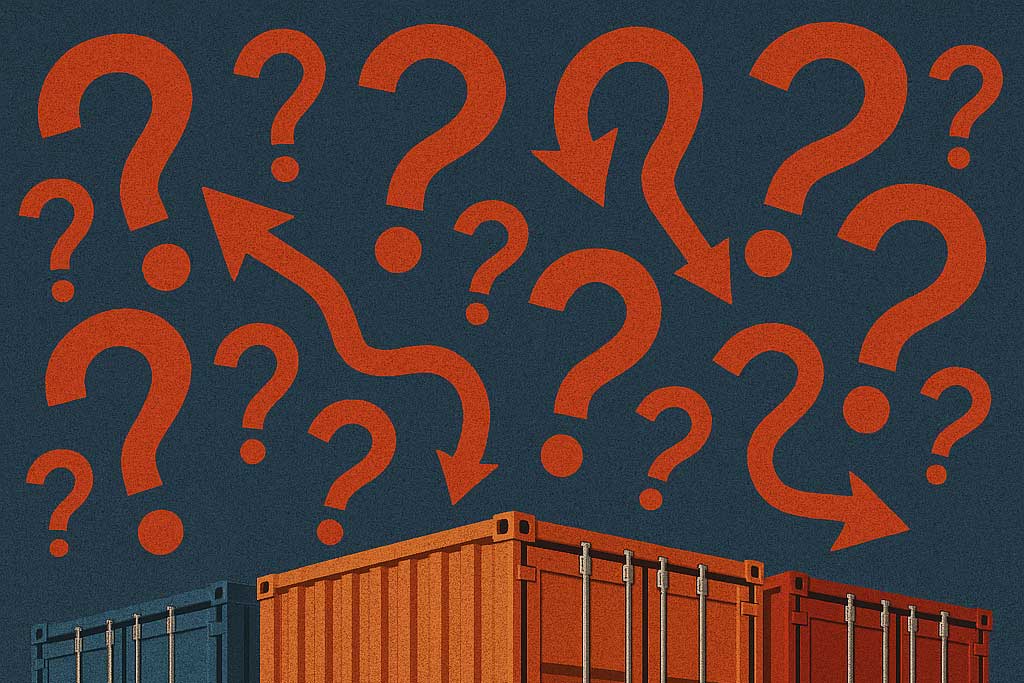1. Shockwaves at Ports
- U.S. seaports under pressure: Operators are bracing for new tariffs—up to 100%—on Chinese-made cranes used in ports like L.A., Houston, and New York. These cranes, often valued at $10–20 M each, are essential for port expansion and modernization. Operators are lobbying hard for carve-outs to avoid multi-billion-dollar cost overruns.
- Container boom ahead of deadlines: In June 2025, the Port of Los Angeles processed a record 892,340 TEUs (20ft equivalent units/20ft containers)—an 8% rise year-over-year—as importers raced to beat mid‑August tariff deadlines on Chinese goods. Still, port officials warn this is short-lived, with import volumes expected to trail off afterward.
- European congestion grows: Ports like Rotterdam, Antwerp, and Hamburg are at “worst congestion since COVID-19,” with ships waiting days longer to unload. The cause: trade diversion from Asia and rippling effects of U.S. tariffs that destabilize global flow.
2. Freight Costs and Supply Chain Volatility
- Higher import expenses: Across sectors, tariffs are pushing up costs for imported inputs. Not only are logistics networks dealing with supply reroutes and cancellations, but just‑in‑time systems—built on predictability—are faltering .
- Trucking uncertainty: U.S. trucking firms feel the squeeze from fewer cross-border shipments (via Canada/Mexico) and rising equipment costs. Some report reduced hours or job losses, illustrating fluctuating freight demand .
3. Trade Diversions & Route Realignment
- Supply-chain pivot: To dodge U.S. tariffs, many companies are shifting sourcing to Southeast Asia—Vietnam in particular—with partial reliance still remaining on Chinese-made components.
- Automotive sector in upheaval: New auto and auto parts tariffs are disrupting integrated North American supply chains. Vehicles and components bounce between plants in the U.S., Canada, and Mexico—until recently. Now, delays, route recalibrations, and halted investments are commonplace .
4. Compliance Complexity & Trade Stress
- Logistics firms expanding services: The chaos has elevated demand for customs advisory. Companies like Kuehne+Nagel are benefitting, providing consultancy, cross-border facilitation, and specialized support to help clients navigate tariffs.
- Compliance professionals overwhelmed: Customs brokers and trade experts report skyrocketing inquiries—from single-digit duties to $54,000 in unexpected costs—shaking even mid-sized businesses. Virtual support groups have formed to manage the overload.
5. Strategic Responses & Industry Survival Tactics
Logistics leaders are adapting to survive:
- Diversify sourcing and routing – Pulling manufacturing to lower‑tariff regions.
- Boost scenario planning – Shortening forecast cycles to respond quickly.
- Drive cross-sector coordination – Aligning warehousing, trucking, and shipping with real-time data.
- Invest in tariff education – Ensuring front-line staff understand evolving trade rules.
- Lobbying for exemptions/delays – Especially for critical infrastructure (e.g. cranes).
Trump’s 2025 tariffs have reverberated across logistics—from clogged ports and inflated costs to route re-engineering and booming compliance arms. The industry is at a pivot point: those embracing agility, diversification, and digital-forward planning seem best poised to thrive amid persistent trade uncertainty.


Comments are closed